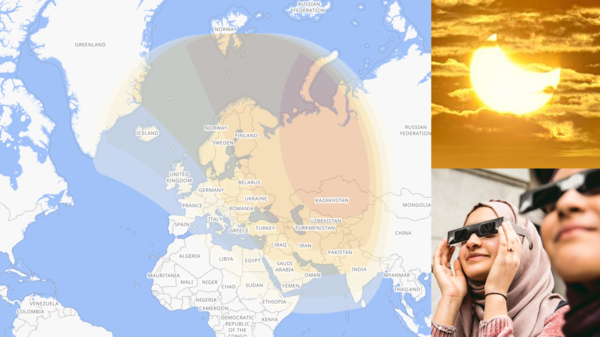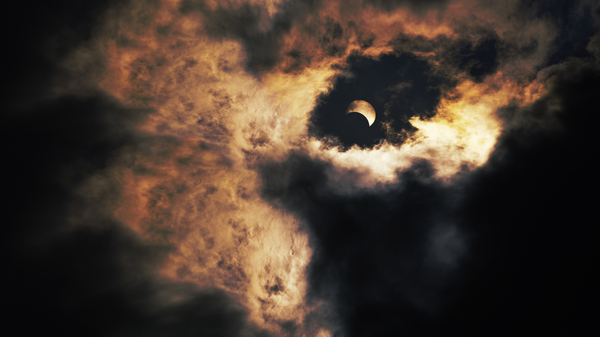How to See Tuesday’s Solar Eclipse
Are you planning to see the partial solar eclipse tomorrow? Here’s all you need to know.

Millions will see a solar eclipse on Tuesday, October 25, 2022. The eclipse map shows where it is visible. A darker shade means that a larger portion of the Sun will be obscured.
©iStockphoto.com/clintspencer/LeoPatrizi, timeanddate.com
Why You Should Watch This Eclipse
Tomorrow, on October 25, 2022, millions of people will be able to see a partial solar eclipse, where the Moon moves in front of the Sun and obscures part of it.
This eclipse is a special one: it is the largest partial eclipse this decade in terms of how many people can see it. According to our data, around 3.2 billion people live in the path of the eclipse. That's about 40 percent of the world's population!
Watch the eclipse LIVE on timeanddate.com

During a partial solar eclipse, the Moon obscures a portion of the Sun's disk.
©iStock.com/Anek Sakdee
Visible in Europe and Asia
To see this eclipse, you need to be in Europe, the western half of Asia, or northern Africa. The eclipse path stretches from Greenland, the UK, and Spain in the west to Russia, Pakistan, and India in the east.
Protect Your Eyes!
Never look at the Sun without proper eye protection. Regular sunglasses are not enough!
Use our eclipse path map to find out if you’re lucky enough to see the eclipse. In areas with lighter shadings, the Moon will obscure only a small fraction of the Sun’s disk; the darker the shading, the larger the eclipse.
In parts of Russia and Kazakhstan, more than 80% of the Sun will be covered by the Moon.
Click on the eclipse map to see eclipse information for any location.
Find Your Local Eclipse Start Time
The eclipse will start at different times, depending on your location. Some examples:
- London, UK: 10:08 (10:08 am)
- Berlin, Germany: 11:09 (11:09 am)
- Kyiv, Ukraine: 12:22 (12:22 pm)
- Tel Aviv, Israel: 12:57 (12:57 pm)
- Karachi, Pakistan: 15:57 (3:57 pm)
- New Delhi, India: 16:29 (4:29 pm)
All times are local.
Search your location in the eclipse path map to find your local start time.

Eye protection is crucial when you watch a solar eclipse.
©iStockphoto.com/LeoPatrizi
Clouds Could Rain on Your Parade
Weather has a habit of happening, and a cloudy sky could ruin your eclipse-watching endeavors.
Current weather forecasts show clear skies in most of the Middle East, Pakistan, and India, as well as eastern Kazakhstan and the Novosibirsk and Altai regions of Russia.
Europe is a mixed bag, with southern areas (e.g., Greece and southern Italy) set to enjoy a cloud-free sky. In large parts of central and eastern Europe, clouds are predicted to melt away during the eclipse, so don’t give up if the sky is cloudy at the beginning!
Weather forecast for your city
Chasing the Blue Sky for Our Eclipse Live Stream
The weather gods are less agreeable at the timeanddate headquarters up here in Scandinavia, so our mobile observatory is on the way to Norway's far north, where meteorologists predict some holes in the cloud cover.
Our crew will capture live footage of the eclipse, which you can follow in real-time in our eclipse live stream, starting at 8:30 UTC. Convert to your local time